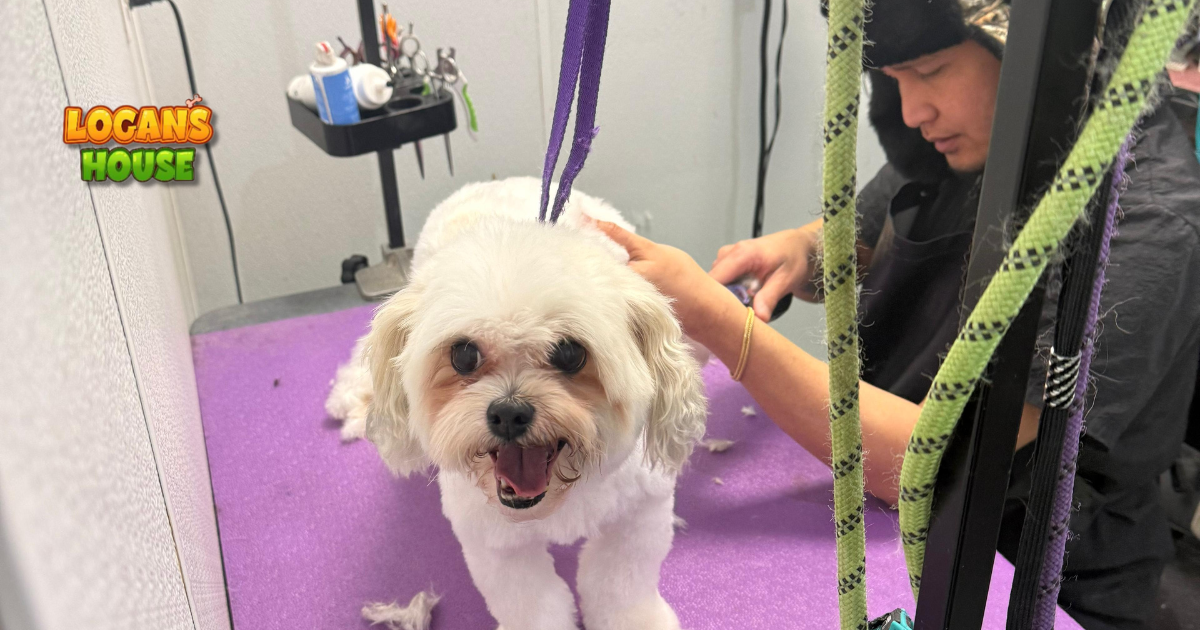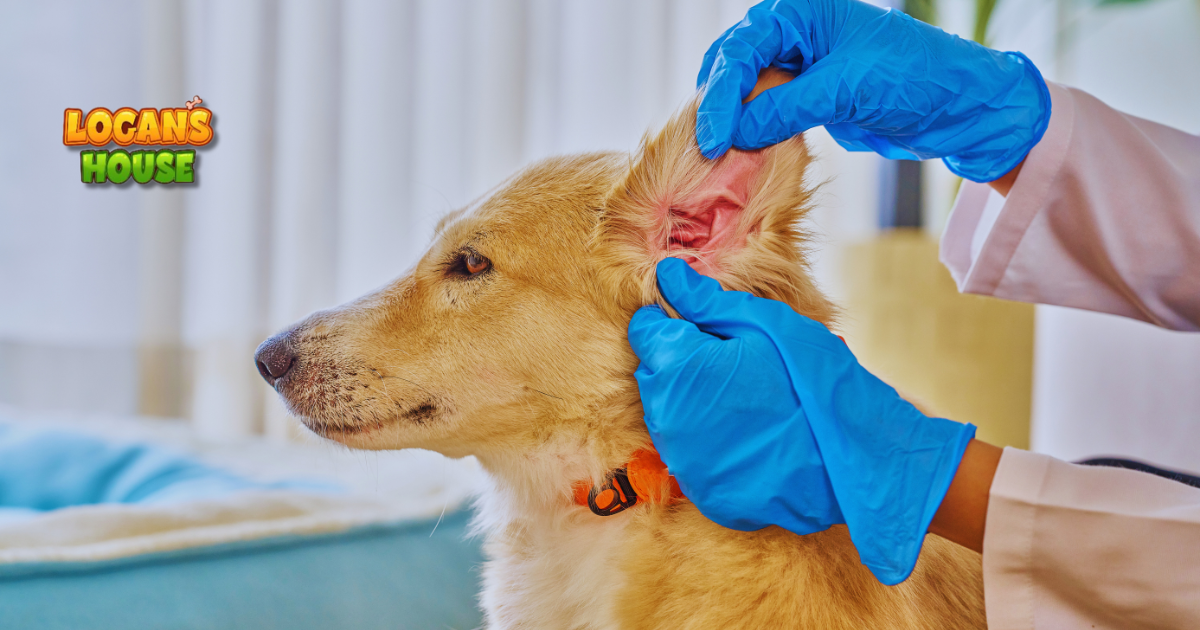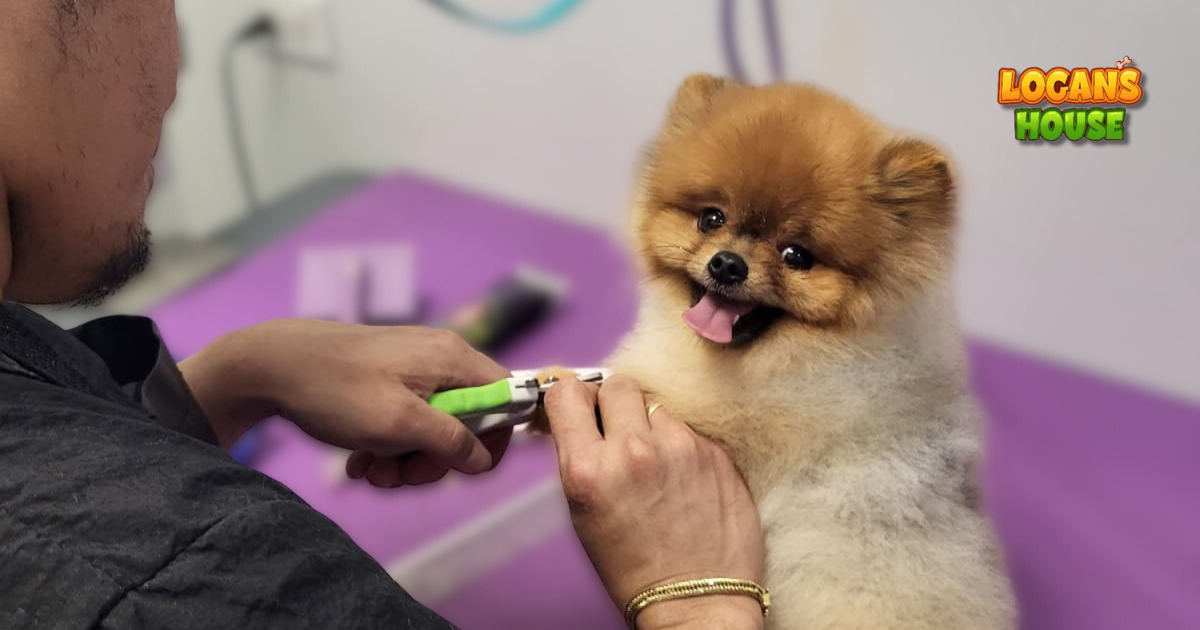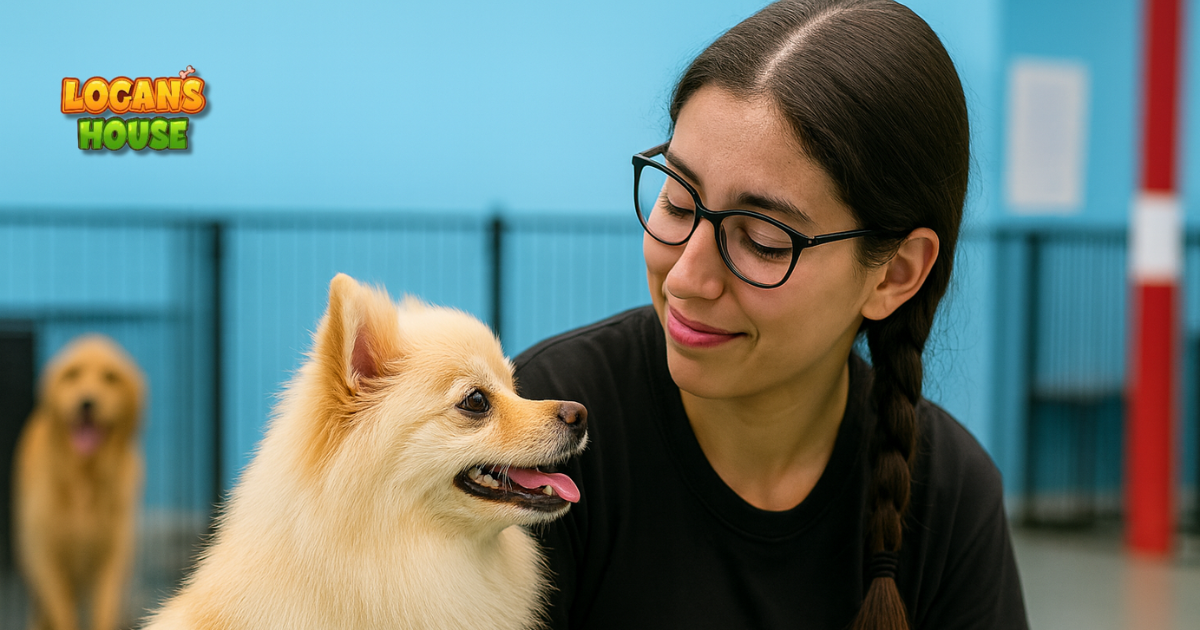Why Naps Matter for Social Learning
September 8, 2025
How Rest Breaks Boost Learning, Confidence, and Calm Behavior in Small Dogs
If you’ve ever watched a group of small dogs play, you’ll notice something fascinating: after a burst of zoomies, wrestling, or toy chasing, they often pause for a nap. These breaks aren’t just adorable, they’re essential. At Logan’s House, we design every day around the rhythm of play → rest → enrichment because science shows naps are where learning, confidence, and calm behaviors actually take root.
In this blog, we’ll explore why naps matter for social learning, how structured rest is built into our dog daycare in Gurnee, IL, and why it makes all the difference for your pup’s wellbeing. We’ll also highlight how grooming, training, and kennel-free boarding
benefit from the same philosophy of balance and recovery.
Why Dogs Need Rest to Learn
Just like children in school, dogs process new experiences during downtime. The American Veterinary Society of Animal Behavior (AVSAB)
notes that dogs consolidate memory during sleep, which helps them retain training and social skills learned earlier in the day (AVSAB
Without naps, dogs may experience:
- Heightened stress or irritability
- Over-arousal (leading to barking, rough play, or accidents)
- Reduced ability to retain training cues
- Difficulty calming at home after daycare
At Logan’s House, we schedule naps every 90 minutes to protect mental balance and prevent overstimulation.
“When I picked up Bella after her first week, I was shocked. She wasn’t frantic or anxious like she used to be after big-box daycare. She was calm, happy, and actually settled better at home. The naps really do make the difference.” — Jessica, Gurnee
The Science of Social Learning
According to the American Kennel Club (AKC), dogs learn by observation and reinforcement, but their ability to absorb lessons depends on rest (AKC). When dogs play together in daycare, they practice social cues like bite inhibition, turn-taking, and polite sniffing. Naps allow their brains to file these lessons away for future use.
At Logan’s House, we combine:
- Small playgroups matched by temperament
- Calm environments with cozy resting areas
- Trained staff in monitoring body language to know when breaks are needed
This rhythm helps prevent “behavioral fallout” that often comes from overstimulating environments.
How We Build Rest Into Daily Care
Unlike chaotic daycares, Logan’s House is structured around balance.
A Typical Day at Logan’s House:
- 9:00 AM → Morning play (small dog playgroups)
- 10:30 AM → Nap/rest (soft beds, calm music, natural light)
- 12:00 PM → Enrichment activities (snuffle mats, puzzles, gentle training games)
- 1:30 PM → Play session #2
- 3:00 PM → Nap/rest
- 4:30 PM → Light play & wind-down before pickup
This routine builds confidence, regulates energy, and ensures pups go home happy — not exhausted.
“After Logan’s House, Milo sleeps peacefully at home instead of bouncing off the walls. The difference in his behavior is night and day.” — David, Chicago
Naps Beyond Daycare: Boarding, Grooming, and Training
🛏️ Kennel-Free Boarding
Our kennel-free boarding
also integrates rest into overnight stays. Dogs enjoy cozy, home-like spaces where they can decompress after social play. Unlike traditional kennels, this reduces stress and supports emotional well-being.
🛁 Grooming
Even our dog grooming packages
emphasize rest. Dogs who take breaks during grooming stay calmer and build positive associations, especially with nail trims or blow-drying.
🎓 Training
In training, naps help dogs consolidate new commands. We encourage breaks between learning sessions so cues like “sit,” “stay,” or leash manners are absorbed long-term.
“The trainers taught us that resting after learning is just as important as practicing. It changed how we work with Max at home, and his leash walking is so much better now.” — Amanda, Waukegan
Practical Tips for Pet Parents
Here’s how to use naps as a tool at home:
- Create a Resting Spot – Provide a consistent crate, bed, or quiet area.
- Schedule Breaks – After 45–90 minutes of activity, encourage downtime.
- Use Calm Cues – Dim lights, turn on soft music, or give a chew toy.
- Avoid Over-Scheduling – Too much activity can harm confidence and learning.
- Trust the Process – A pup who naps often is not “lazy”—they’re growing smarter and calmer.
For busy families, dog daycare in Gurnee, IL
helps structure this balance into your pup’s day.
Additional Resources
For further reading on the importance of sleep and learning in dogs:
Final Thoughts
Naps aren’t optional—they’re essential to healthy behavior and lifelong learning. At Logan’s House, we build them into everything we do, from structured play to grooming, boarding, and training.
Because your dog deserves more than just exercise—they deserve balance.
📍 Serving families in Gurnee, Waukegan, and Chicago, IL with daycare, kennel-free boarding, grooming,
and training
tailored for small dogs.
Ready to give your dog the perfect balance of play and rest?
Book a visit today
or call us at (224) 572-1909.









